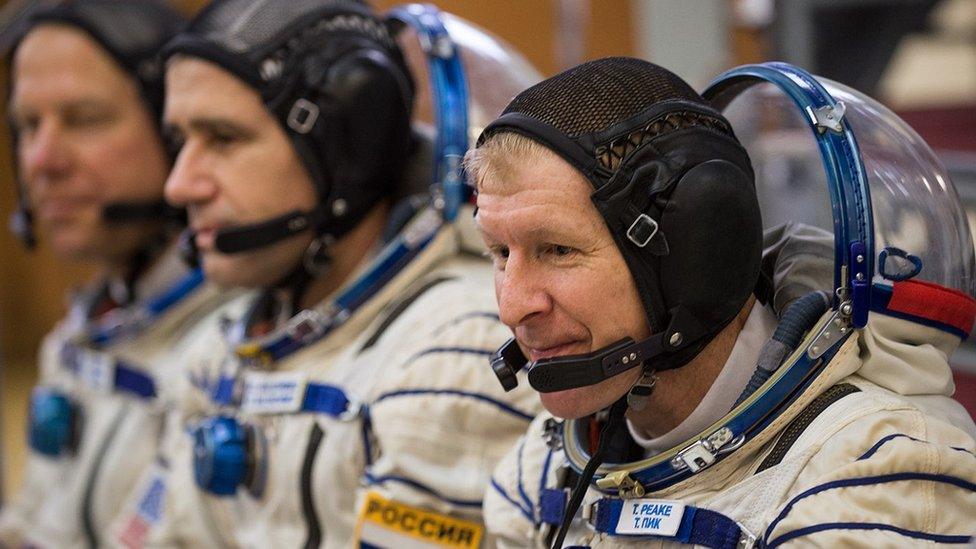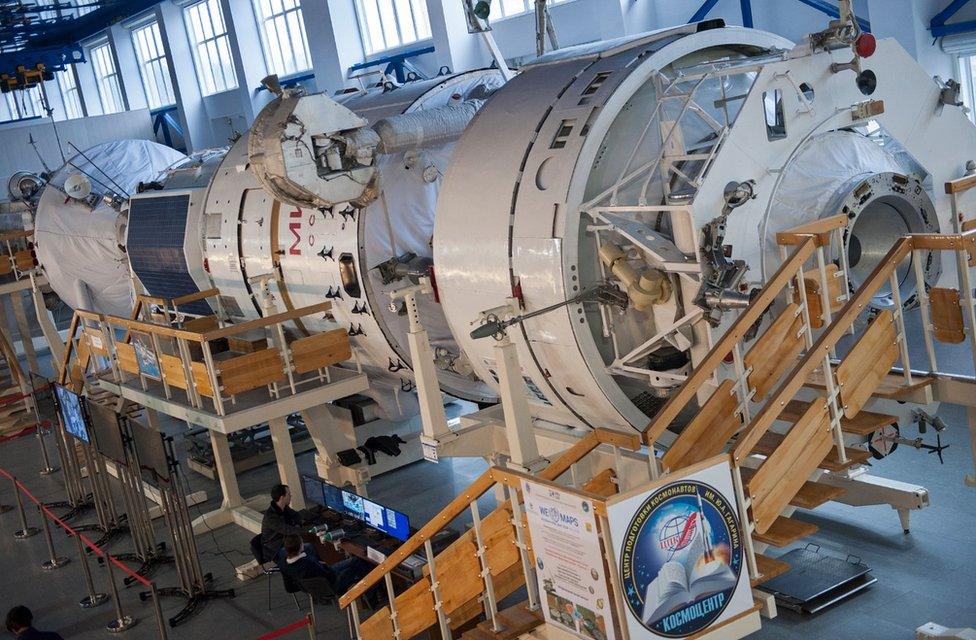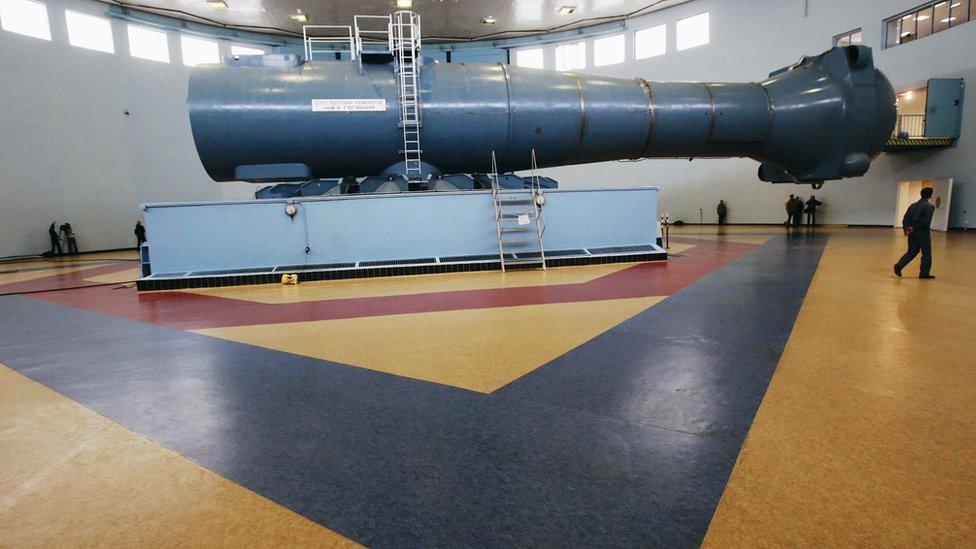Cosmonaut training site: Oasis in an uncertain world
- Published
- comments

Tim Peake has been approaching the end of his training
Lost in the birch forests an hour's drive outside Moscow is an oasis of diplomatic calm amid the turbulence surrounding Russia's relations with the outside world.
Once through the gates of what's known as Star City, the Russian spaceflight training centre, you leave behind all inconvenient talk of doping, sanctions, Syria and Ukraine.
With drab concrete buildings but an extraordinary history, this place has hosted dozens of foreign astronauts over the years - and right now at least two Americans, and Britain's Tim Peake, are happily and studiously going through their drills.
While the headlines are raging about Russia's actions with its military or its athletes, one very stark and unavoidable fact remains: that Russia currently has the only means of getting people into orbit above Earth.
When Western sanctions were first imposed on Russia, and questions were raised about whether Americans should still use Russian rockets, a Russian minister tweeted a picture of a Nasa trampoline - a reminder of the fact that the Americans had no choice.
British astronaut Tim Peake speaks to David Shukman
Ever since Nasa retired its space shuttles in 2011 - which were costing a vast amount for each launch - any manned spaceflight has had to involve Russia's venerable but highly dependable Soyuz rockets.
Even before the end of the shuttle era, American astronauts were brought here to train to fly on them - but the motivation back then was about deliberately trying to foster a shared effort in space.
So Americans flew on the Soyuz, Russians on the shuttle and both started constructing the International Space Station, a monument to post-Cold War collaboration.
On my last visit here, back in 2003, in the wake of the Columbia space shuttle disaster, I met the British-born NASA astronaut Michael Foale.
I asked him which he'd prefer to ride: an American shuttle or a Russian Soyuz. He was too polite to answer directly but said his wife was happier to see him in a Soyuz because it was more reliable.
Now the Soyuz route is a necessity, and will remain so until two American companies, SpaceX and Boeing, are ready with their own crew capsules, a prospect that keeps slipping.
And that means that literally anyone who wants to get into space has to come to this campus, learn some Russian and get the hang of the Russian way of doing things.
Everywhere you look there are reminders of the extraordinary heritage of Russian achievements in space and of the legendary role of Star City itself.
This place was founded in 1961, a moment of dazzling success, as the old Soviet Union amazed the world by launching Yuri Gagarin into space, the first person ever to fly in orbit.

Star City contains full-size mock-ups of the modules making up the space station
It then went on to teach and prepare a host of giants of spaceflight: the first woman in space, Valentina Tereshkova, the first person to walk outside a spacecraft, Alexei Leonov, and the first people to live on Russia's space station, Mir.
At first sight, Star City does not look space age. Money is not wasted on appearances. The grounds are adorned with an ancient fighter jet rather than a gleaming modern rocket and there's a slight air of dilapidation.
But then you step inside, and a different and far more impressive reality unfolds.
The corridors are lined with pictures of the generations of spacefarers who have studied here.
Our first stop is a cavernous hall containing an array of highly realistic mock-ups of Soyuz launch capsules - simulators of the kind that Tim Peake and his colleagues Yuri Malenchenko and Tim Kopra were in yesterday for their final training session before liftoff next month.
In the control room, serious figures with stern faces created a kind of orbital hell in the capsule, generating no fewer than 10 different emergency scenarios in the course of three hours.

The centrifuge accustoms cosmonauts to the G-forces experienced during launch and re-entry
The approach obviously works. I learned that the much-travelled Malenchenko, a veteran of five previous spaceflights, has never failed a simulator test, and that each of his mock landings has been successful, despite multiple malfunctions and alarms that would undermine someone less well trained.
In fact Malenchenko is so comfortable in space he chose to chalk up another first by becoming the first person to get married in space - though the ceremony in 2003 was handled remotely with his bride in Texas while he was in orbit above New Zealand.
Next came another vast hall, this time housing replicas of the Russian modules on the International Space Station. Tim Peake pointed out to me what looked like the largest, a module that acts as a social focal point for the astronauts to gather in every evening.
As we spoke, I was struck by the thought that his mission, and so many others, simply would not be possible without Russia.
Back in the Cold War, America won the race to put men on the Moon while a secret Soviet plan for lunar landings failed and was then hushed up.
But take a longer view of mankind's effort to get beyond Earth: with flights into orbit running year in, year out, with a reassuring safety record, with a decades-long routine of preparing people for spaceflight, and Russia emerges in a very different light.
Just don't come here and mention anything awkward about events beyond Star City.
Follow David on Twitter, external.